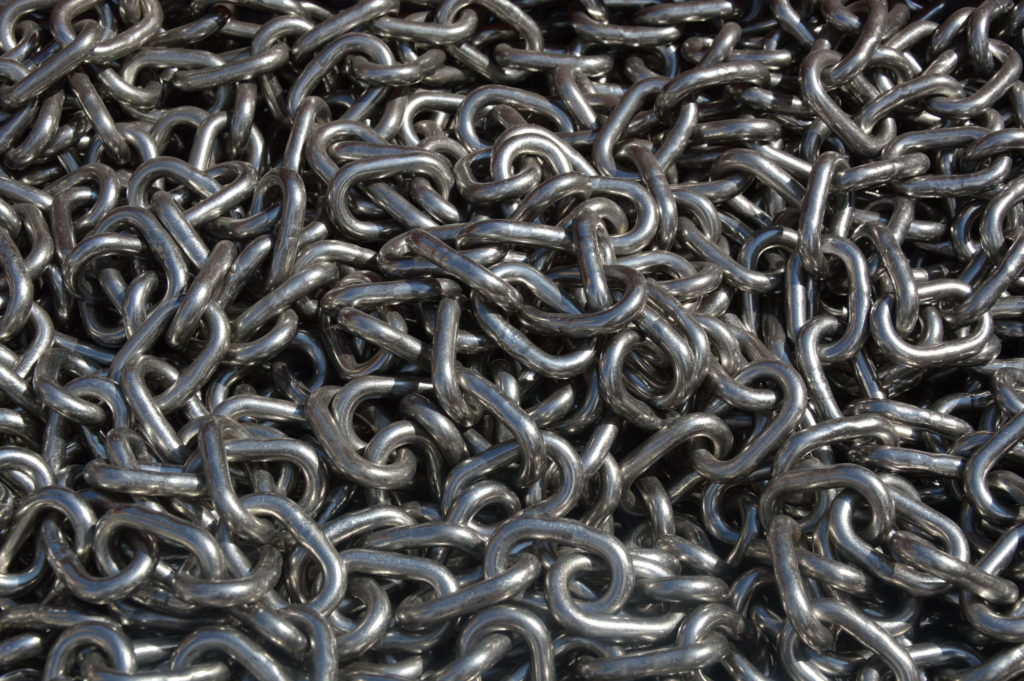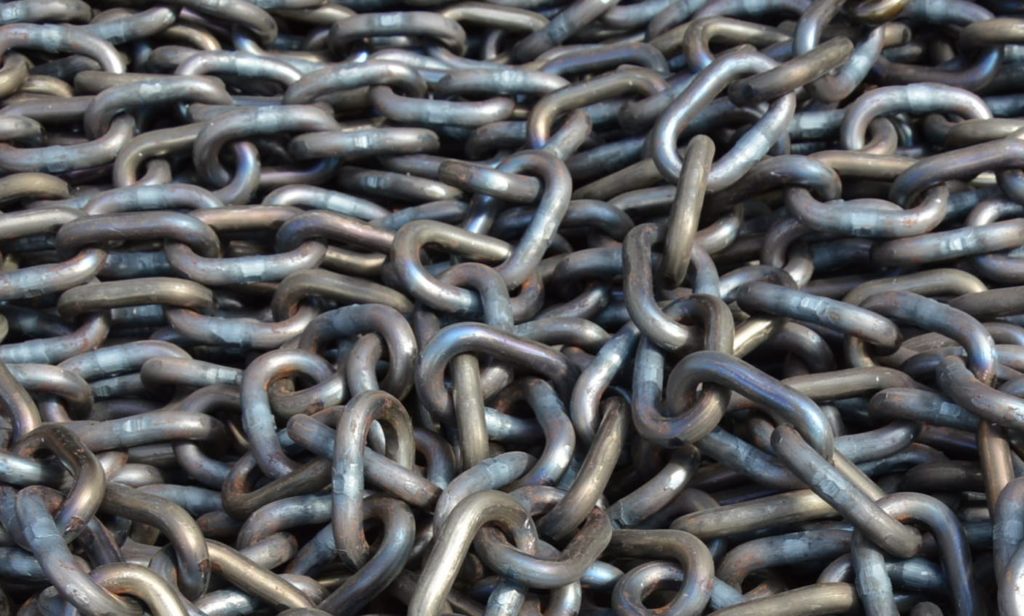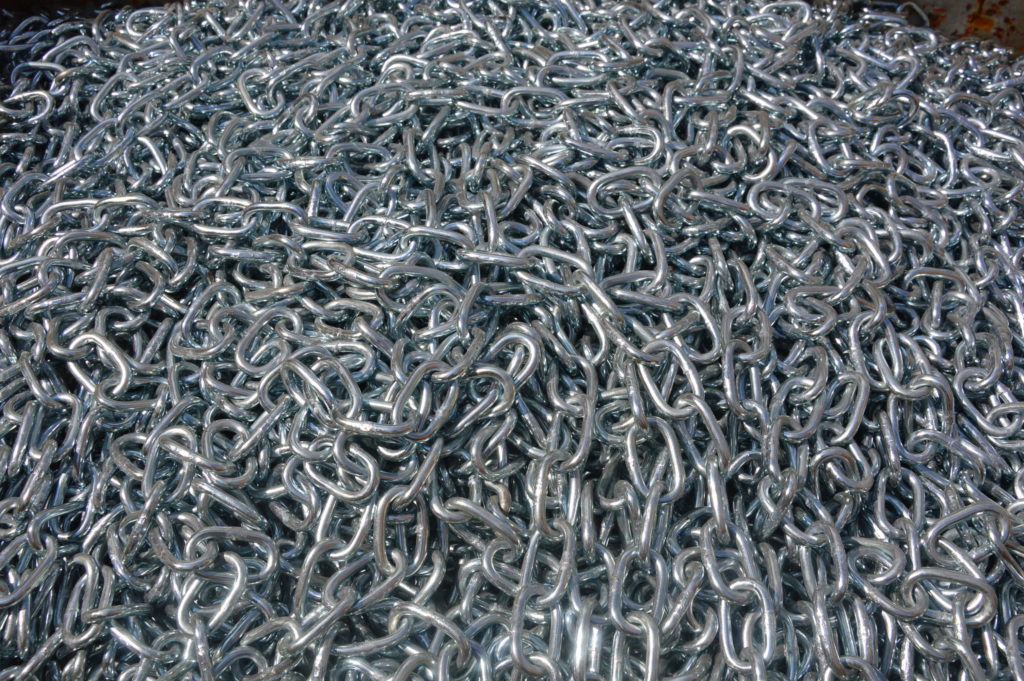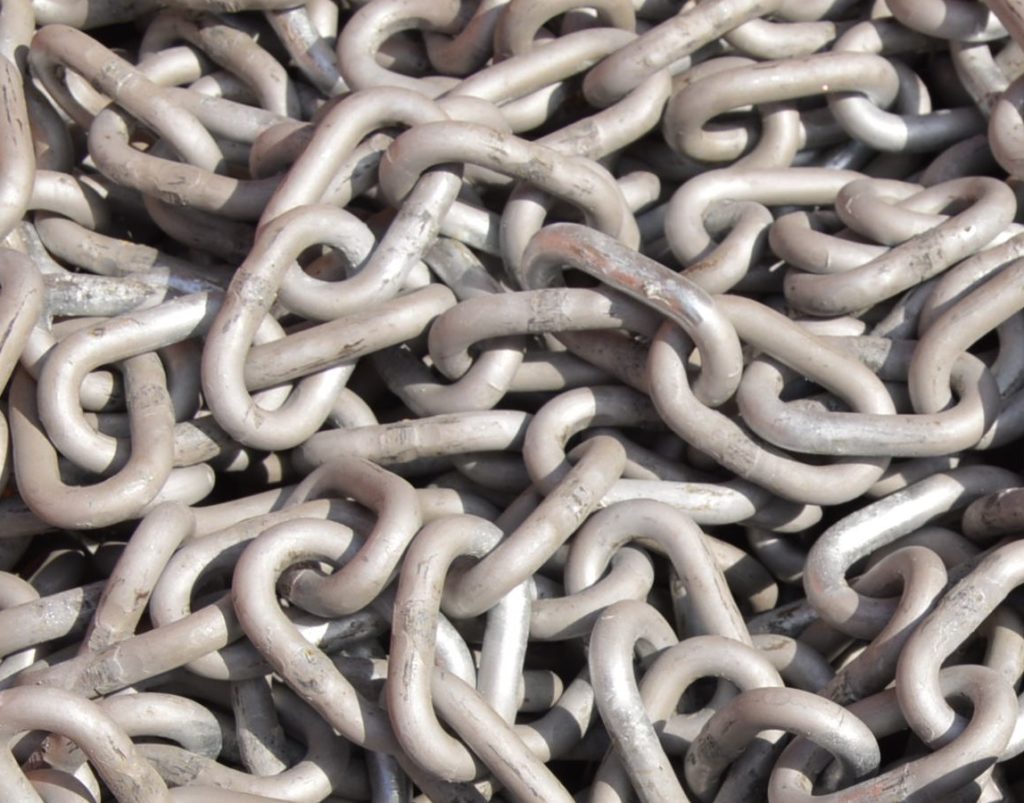
Lucida
Il processo di finitura lucida avviene attraverso l’utilizzo di speciali macchinari e materiali che vibrando e sfregando in modo continuo, ripuliscono la catena donandole un aspetto lucido e luminoso. Questo trattamento non preserverà la catena dall’eventuale arrugginimento.
Grezza
La finitura grezza è caratterizzata dall’assenza di finiture superficiali applicate al termine del processo produttivo.
La catena grezza è destinata ad applicazioni il cui utilizzo pratico non preveda particolari protezioni dagli agenti esterni e dalla corrosione.


Zincatura elettrolitica a norma UNI ISO 4520 e UNI ISO 2081
Il procedimento di zincatura elettrolitica mira a garantire una maggiore protezione e resistenza agli agenti atmosferici agendo direttamente sull’intera superficie della catena, specialmente sulle parti di contatto degli anelli. Il processo eseguito rispetta gli standard previsti dalle normative UNI ISO 4520 (passivazioni) e UNI ISO 2081 (rivestimenti di zincatura).
Zincatura a caldo a norma EN ISO 1461
La zincatura a caldo dell’acciaio crea un rivestimento estremamente efficace contro la corrosione e formazione di ruggine, attraverso una reazione metallurgica si forma uno strato di lega intermetallica Ferro-Zinco resistente agli urti e perfettamente continuo che impedisce il contatto delle catene e relativi accessori con l’atmosfera.
Mediante tale processo che consiste, nell’immersione in un bagno di ZINCO fuso a circa 450 °C, si ottiene una duplice protezione:
la prima è fisica, dovuta al frapporsi dello zinco tra la superficie dell’acciaio e l’atmosfera, la seconda è elettrochimica che è dovuta alla differenza di potenziale tra i due metalli, ossia, si consuma lo strato di zinco che si corrode, salvaguardando l’acciaio con cui è prodotta la catena.

Verniciatura
Il procedimento di verniciatura delle catene può esser realizzato in due differenti modalità.
La verniciatura a polvere che è una tecnica protettiva e decorativa che garantisce una eco-compatibilità, oltre ad essere la finitura estetica per eccellenza. In questo processo non vengono usati solventi o altre sostanze nocive e le stesse polveri non contengono sostanze nocive dannose sia per l’uomo che per l’ambiente.
Un secondo procedimento prevede che le catene vengono ricoperte di polvere verniciante a base di resine sintetiche (ad esempio le polveri epossidiche), che aderisce per effetto elettrostatico, e poi passate in un forno dove a causa della temperatura la vernice prima fonde e poi polimerizza dando uno strato aderente.
Entrambi i processi vengono realizzati per garantire una maggiore protezione alle catene dalla corrosione e dagli agenti atmosferici o esterni.
Inox
Le catene realizzate in acciaio INOX presentano delle eccezionali qualità di resistenza alla corrosione ed alla ossidazione.
Questa resistenza si esalta in tutti quei contesti dove il prodotto, seppur esposto al contatto con sostanze chimiche o agenti di particolare aggressività (propri degli ambienti marini, in agricoltura o nella avicoltura), non perde la propria integrità, conservando appieno le funzionalità e le finalità di utilizzo.
